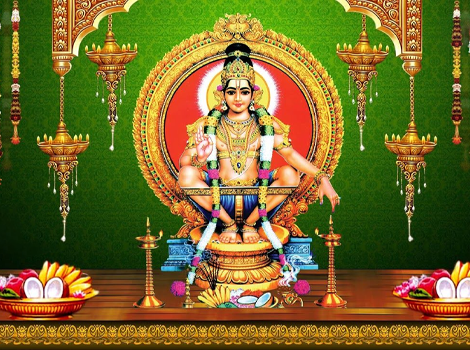
Lord Ayyappa is a Hindu deity worshiped mainly in South India. He is also known as Sastha, Hariharaputra, and Manikandan. Lord Ayyappa is believed to be the son of Lord Shiva and Lord Vishnu (in the form of Mohini). Mohini is the only female avatar of Lord Vishnu, which he took to kill Bhasmasura. Mohini, beauty personified, enchanted God Shiva to fall for Vishnu in female form, and Ayyappa (Hariharaputra) was born. According to legend, he was born to destroy the demon Mahishi who was causing trouble for the Devas (Gods). Lord Ayyappa is often depicted as a handsome young man with a bow and arrow and is revered as the presiding deity of the famous Sabarimala temple in Kerala, India.
The worship of Lord Ayyappa is associated with strict observance of celibacy, abstinence from alcohol and non-vegetarian food, and a strict code of conduct. The devotees who undertake the pilgrimage to Sabarimala observe a 41-day vow of austerity and penance before visiting the temple. The worship of Lord Ayyappa is a unique blend of Shaivism, Vaishnavism, and Shaktism.
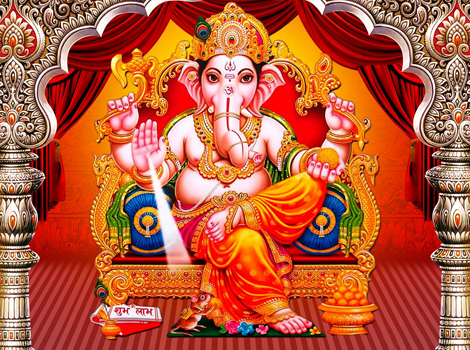
Lord Ganapati, also known as Ganesha or Vinayaka, is a popular Hindu deity worshipped as the remover of obstacles and the god of beginnings and wisdom. He is also considered the patron of arts and sciences, intellect, and knowledge. Lord Ganapati is depicted with the head of an elephant and a human body, and is usually shown with a big belly, four arms, and one tusk.
His worship is an important part of Hindu culture and is celebrated with great enthusiasm during festivals like Ganesh Chaturthi.
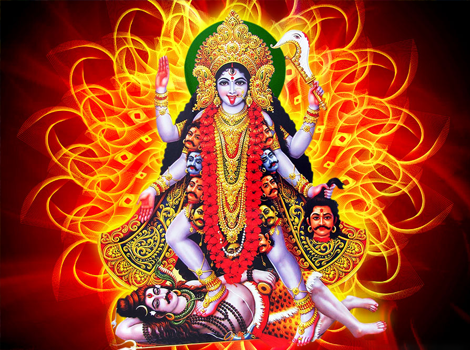
Devi Bhadra, also known as Goddess Durga or Goddess Bhadra Kali, is a Hindu deity who is widely worshiped in India and Nepal. She is considered the mother of the universe and the supreme feminine power. According to Hindu mythology, Devi Durga is an incarnation of Goddess Parvati, the consort of Lord Shiva. She is depicted as a warrior goddess with ten arms, riding a lion or a tiger, carrying weapons and slaying the demon Mahishasura.
Devi Durga is revered as a symbol of strength, courage, and protection. She is also worshiped as a giver of spiritual knowledge and is associated with the auspicious festival of Navratri, which is celebrated for nine days in her honor.
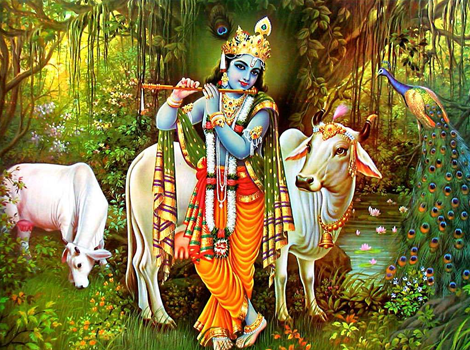
Lord Krishna is the eighth avatar of Lord Vishnu, the preserver of the universe. He is revered as a teacher, philosopher, and divine guide. In Hindu mythology, Lord Krishna was born to Devaki and Vasudeva in Mathura and was raised by his foster parents, Nandagopan and Yashoda, in Vrindavan. He is often depicted as a playful child (Unnikrishnan, Venna Krishnan, Balakrishna), a charming young man (Gopala, Govinda, Hari), and a wise philosopher. Lord Krishna is known for his teachings on the importance of detachment, duty, and devotion, which are described in the Bhagavad Gita, a sacred text in Hinduism. In our temple Lord Krishna is consecrated as Balagopal (Balakrishna).
Lord Krishna is associated with many symbols, including the peacock feather, the flute, and the cow. He is often depicted playing the flute, surrounded by cows and gopis, or as a warrior, fighting against demons and protecting his devotees. Lord Krishna is also associated with the festival of Holi, which celebrates his playful and mischievous nature.
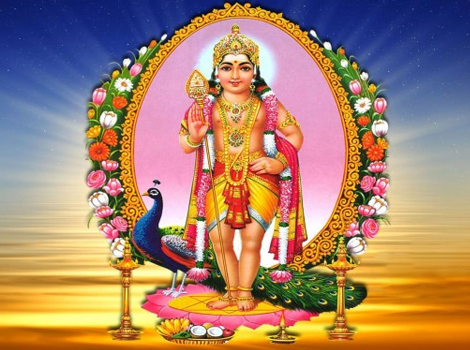
Lord Subramanian, also known as Murugan, Kartikeya, Shanmukha, and Skanda, is a Hindu deity worshiped mainly in South India and Sri Lanka. He is the son of Lord Shiva and Goddess Parvati, and is believed to be the God of war, victory, wisdom, and love.
Lord Subramanian is often depicted as a handsome young man with six faces and twelve arms, riding on a peacock. He is also associated with the spear or vel, which is his primary weapon. In Hindu mythology, Lord Subramanian is said to have been born to defeat the demon Surapadman and his army of demons and is revered for his valor and courage.
The worship of Lord Subramanian is associated with various rituals and festivals, including the Thaipusam festival celebrated in Tamil Nadu, Kerala, and Sri Lanka. The festival involves devotees carrying a kavadi, a decorated structure made of wood and metal, and piercing their bodies with needles and hooks as a sign of their devotion and penance.
Lord Subramanian is also considered as the presiding deity of several temples in India, with the most famous being the Arulmigu Dhandayuthapani Swamy Temple in Palani, Tamil Nadu, and the Sri Subrahmanya Swamy Temple in Tiruchendur, Tamil Nadu.
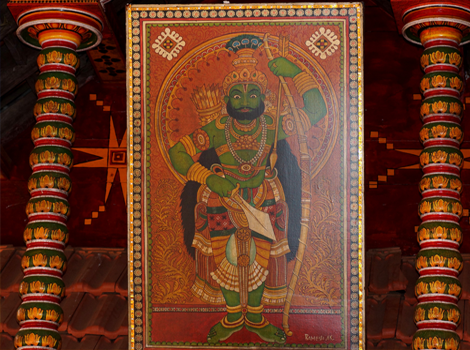
Vettakorumakan is the son of Shiva and Goddess Parvati – born when Shiva took the Kiratamurti form to test determination and perseverance of Arjuna in the Mahabharata. Legend has it that Shiva and Goddess Parvati appeared before Arjuna as forest dwellers. Arjuna was blessed by Shiva with the Pashupata Astra. Shiva and Parvati then resided in the forest in the form of forest dwellers and Vettakorumakan was born during this period. Vettakkorumakan is also known as Kirata Sunu. The deity holds bow and arrow in one hand and the other hand holds a traditional Kerala weapon known as Churika – a short word.
Vettakorumakan is generally seen as an incarnation of Lord Shiva and hence the various rituals and festivals associated with Lord Shiva is also followed for Vettakorumakan at Nerul Sri Ayyappa temple.
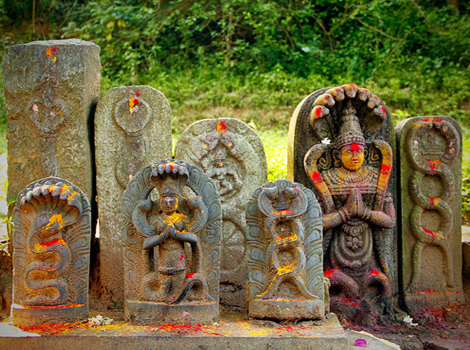
In Hinduism, Nagadevatha or Nagas are serpentine deities that are worshiped as guardians of the natural world, especially bodies of water such as rivers, lakes, and oceans. Nagadevatha (Nagaraja and Nagayakshi) are the goddess of snakes and is revered as a protector of the environment. In some traditions, Nagaraja and Nagayakshi are worshipped together as a divine couple, with devotees seeking their blessings for good fortune, prosperity, and protection.
The worship of Nagadevatha is a popular tradition in South India, especially in the states of Kerala and Tamil Nadu, where many temples and shrines are dedicated to them. The most famous temple dedicated to Nagadevatha is the Nagercoil Nagaraja Temple in Tamil Nadu, and Mannarsala temple in Alappuzha, Kerala, which is visited by thousands of devotees every year.